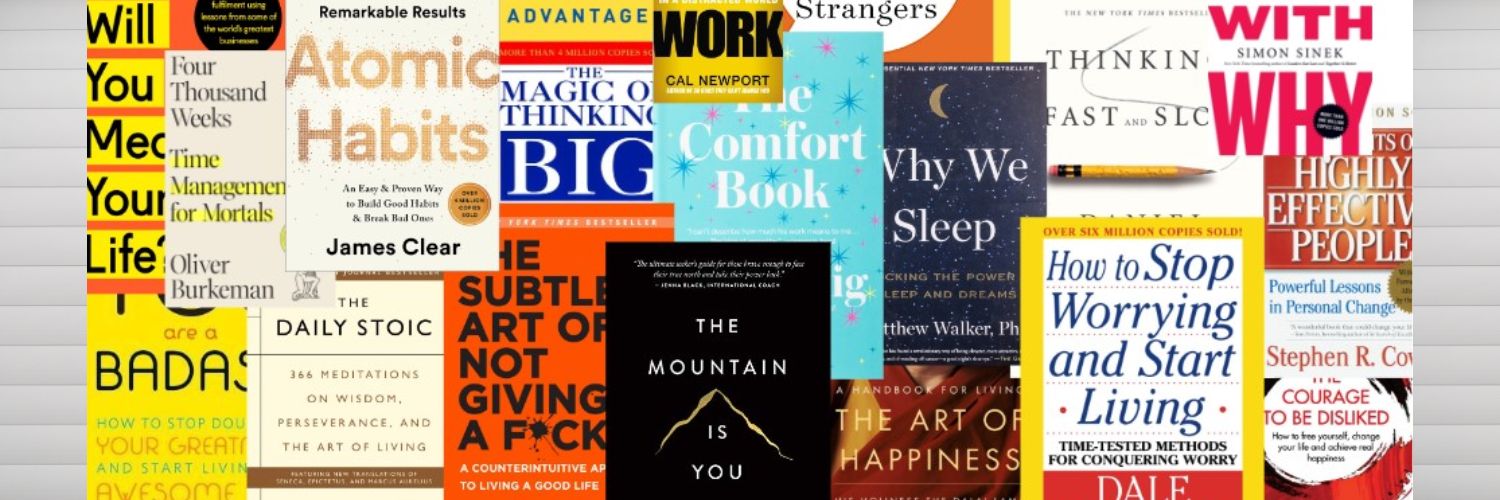
Table of Contents:
-
How to Write a Self-Help Book: A Practical Guide?
- 1. Know Your “Why” and “Who“
- 2. Focus on One Core Message
- Here’s how to focus your idea:
- 3. Outline Everything
- A simple structure for your outline:
- 4. Write Like You’re Talking to a Friend
- 5. Weave in Personal Stories
- 6. Back Up Your Advice with Facts
- 7. Make It Actionable
- Examples of Practical Steps:
- 8. Edit and Polish
- Here’s how to tackle editing:
- 9. Choose a Title That Stands Out
- 10. Publish and Promote Your Book
- Final Thoughts
A self-help book can seem like it requires a lot of time and effort, but the good point is that it is one of the most gratifying activities one could undertake. If you have experienced events throughout your life, such as overcoming obstacles, changing your mindset, or even learning a new skill, then you have a lesson that needs to be shared.
The perks of it, is that creating a self-help book is not as hard as it appears at first glance. The only components necessary are a well-thought-out approach, determination, and passion. Only then will you be able to transform your vision into a book that is going to be appreciated by many.
Let’s do that in a detailed manner.
1. Know Your “Why” and “Who“
The first step is getting clear on why you’re writing the book and who you’re writing it for. Ask yourself:
- What problem am I trying to help readers solve?
- How will they feel after reading my book?
- Who are these readers, and what’s their current struggle?
For example, are you writing for young professionals dealing with burnout? Are parents trying to strengthen their relationships with their kids? Entrepreneurs learning to build resilience? Knowing this will shape every part of your book, from your tone to your chosen examples.
If you’re too broad, it’s easy to lose focus. Narrow your audience and write as if you’re speaking directly to them.
2. Focus on One Core Message
One of the biggest mistakes new writers make is trying to cover everything. A good self-help book zeroes in on one main idea and builds everything around it. Think about it—readers come to you for specific advice. If you cram multiple topics into one book, it can get confusing.
Here’s how to focus your idea:
- Choose one main challenge or question your readers have.
- Break it into smaller, digestible parts.
- Build each chapter around a step or solution.
For instance, if your book is about boosting confidence, you might dedicate each chapter to a different area: self-talk, body language, building new habits, and so on. This keeps things organized and easy to follow.
3. Outline Everything

An outline may not sound exciting, but trust me—it’s a lifesaver. It’s easy to get lost or go off on tangents without it. Think of your outline as a roadmap that keeps you on track.
A simple structure for your outline:
Introduction: What’s the problem, and why should readers care?
Chapters: Break down each step of the solution. Keep each chapter focused on one idea.
Conclusion: Summarize the key points and motivate readers to take action.
Even if your outline changes as you write, it’ll give you a solid foundation and prevent that dreaded “Where do I go from here?” feeling.
4. Write Like You’re Talking to a Friend

Self-help books should be approachable, not stuffy or overly formal. Think of your readers as friends who need your advice. Keep the tone conversational and relatable. Avoid heavy jargon or long, complicated sentences.
Instead of saying:
“This method has been shown to significantly improve personal productivity.”
Try:
“Here’s a simple way to get more done without feeling burned out.”
The easier it is to read, the more your readers will stick with you—and apply what you’re teaching.
5. Weave in Personal Stories

Nothing makes a self-help book more powerful than personal stories. Your experiences help readers see that you’re not just giving random advice—you’ve lived it. They’ll connect with your ups and downs, your failures and wins.
Be honest and vulnerable. Share the moments when you struggled and what helped you push through. But remember, this isn’t a memoir. The focus should still be on the reader and how your story relates to them.
For example, if your book is about building self-confidence, talk about a time when you felt insecure and what steps you took to overcome it. Show readers that if you can do it, they can too.
6. Back Up Your Advice with Facts

Stories are great, but adding research and expert insights will give your book more credibility. Think of it as giving readers a balance of inspiration and solid information.
Depending on your topic, this might include:
- Scientific studies
- Quotes from experts
- Relevant statistics
- Case studies
Don’t go overboard with data—this isn’t a research paper. Sprinkle it in where it strengthens your message.
7. Make It Actionable

The best self-help books give readers practical steps they can take. Don’t just talk about ideas—help your readers apply them to their lives. Add exercises, reflection questions, or step-by-step guides at the end of each chapter.
Examples of Practical Steps:
Write down three small habits you want to build this month.
Take five minutes each morning to practice gratitude.
Reflect on a recent challenge and what you learned from it.
These exercises help readers stay engaged and feel like they’re making progress as they read.
8. Edit and Polish

Once you’ve written your first draft, it’s time to revise. And yes, this is where the magic happens. Your first draft doesn’t have to be perfect—it’s all about getting the ideas out. The editing stage is where you make it shine.
Here’s how to tackle editing:
Focus on structure and flow first. Does each chapter connect logically?
Cut out the fluff. Let it go if a sentence or paragraph doesn’t serve the main message.
Read it out loud. This helps catch awkward phrasing and clunky sentences.
Get feedback. Share it with friends, writing groups, or beta readers. Fresh eyes can spot things you’ve missed.
And don’t be afraid to bring in a professional editor—they’ll help turn a good draft into a great one.
9. Choose a Title That Stands Out

Your title is the first thing people see, so make it count. It should be clear and memorable and hint at the benefits readers will receive.
Examples of Great Titles:
“You Are a Badass”
“The 5 Love Languages”
“Tiny Habits”
Take your time with this step. Brainstorm, test different options, and get feedback from others.
10. Publish and Promote Your Book

Now that your book is ready, it’s time to share it. You can choose the traditional publishing route or self-publish.
Traditional Publishing: You must pitch your book to publishers or agents. They’ll handle editing, design, and marketing, but the process can take a some time, you need to be patient and trust the process.
Self-publishing gives you full control. Platforms like Amazon’s Kindle Direct Publishing (KDP) make publishing easy and reaching readers worldwide.
No matter which path you choose, promotion is key. Build an online presence, connect with your audience on social media, and collaborate with influencers in your niche.
Final Thoughts
Writing a self-help book provides you with an opportunity to share your knowledge and positively impact someone else’s life. Focus on your task, ensure you are genuine, and know that you can complete this in bits and pieces. Do not rush.
Writing a self-help book is a ritual. In addition to providing solutions or directions to follow, one is supposed to give a piece of himself. Your narrative, your lessons, and your perspectives. Sometimes, the words will flow effortlessly, and everything will fall into place. There are times when it will feel like you are staring at an empty sheet of paper for eternity. That is the reality of it, and every writer goes through that phase.
The significant thing is that you have words on paper, and you derive faith from the premise that your book needs to be penned down.
All the ‘real’ self-help books stem from the struggles and the fights everyone faces, the breakthroughs, fantastic moments, and wisdom earned through failure. Those are the things that make your book stand out. No one can tell your story like you can. That’s the uniqueness of you. House of Bestsellers can assist if and when you face writer’s block. To help arrange your ideas and to help during the writing phase, we are always available.
Just keep writing. Keep showing up. The words you’re searching for will come. The most important thing isn’t perfection—it’s creating something honest and meaningful. And that’s exactly what your readers need.

